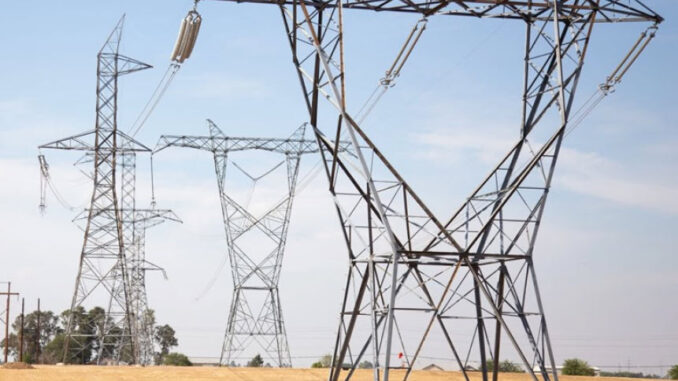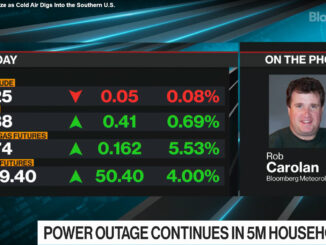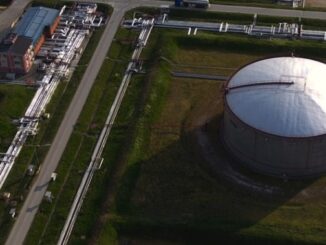
The risk of wide-area blackouts is a critical issue that can be addressed with risk assessments and enhancements to the existing electric power grid. Read on to learn more about wide area blackout risk. To gain a better understanding of how a risk assessment can help reduce the risk-wide area blackouts, register for Prescient’s free webinar on Thursday, July 22 at 11:00 AM PDT.
What is a Wide Area Blackout?
A wide-area blackout occurs when part of the electric power transmission system collapses, interrupting the flow of electric power to 250,000 customers or more. This is equivalent to shutting off electric power at many large neighborhood substations, leaving all the surrounding neighborhoods without power for several hours to days.
Several well-known wide-area blackouts have occurred, including the Northeast blackout of 1965, Northeast blackout of 2003, and the Pacific southwest blackout of 2011. During these historic blackouts, the power grid collapse resulted in the simultaneous loss of electric power across several states, Canadian provinces, and parts of Mexico.
The blackouts in 1965, 2003, and 2011 were caused by human error (lack of attention to detail). The northeast blackout of 1965 occurred when protective relays tripped circuit breakers connected to five 230 KV transmission lines. The Northeast blackout of 2003 occurred when an overloaded 345 KV transmission line sagged into trees while the power grid was experiencing low voltage. The Pacific Southwest blackout of 2011 occurred when a 500 KV air break switch was opened before its associated circuit breaker.
More recently, the United Kingdom blackout of 2019 occurred when two large generators tripped offline nearly simultaneously. This blackout was caused by a design deficiency.
Luckily, each of these blackouts required minimal repairs, and power was restored in less than 24 hours. However, this may not be the case for future wide-area blackouts.
What Causes Wide Area Blackouts
Wide area blackouts are caused by mismatches between energy production and energy consumption that exceed the normal tolerance band. During normal system operation, the energy produced is equal to the renergy consumed; this is illustrated in Figure 1, where the beam is perfectly balanced on the balance point.

When customer load increases, the amount of power produced is ramped up to match energy with the load. When customer load decreases, the amount of power produced is ramped down to match energy with the load.
Figure 2 shows power grid operations during fault conditions. When faults occur, the transfer path between energy production facilities and consumers becomes distorted, resulting in a sudden large mismatch between production and consumption. Additionally, the amount of energy transmitted from production facilities is reduced. The amount of distortion is a function of initial conditions. The distortions and changes occur almost instantaneously.

When faults are cleared, a new transfer path is formed. Energy production and energy consumption are temporarily increased until a new balance point is established. At this point, there can be one of two potential outcomes: the grid returns to normal, balanced operating conditions; or the grid balance gets further distorted because energy consumption exceeds energy production, as shown in Figure 3.

If a new balance point is not established in a few seconds, a wide area blackout can occur in cascading fashion. The amount of distortion is a function of initial conditions and newly established, post-fault conditions.
Important Power System Parameters
A wide-area blackout is the result of a combination of three important power system parameters: triggering events, risk factors, and voltage recovery. Let’s take a closer look at each of these three.
Triggering events are tipping points that may lead to a wide area blackout. During normal system operations, the energy produced by power plants, wind farms, solar farms, etc., matches energy consumed by homeowners, businesses, and industry. Occasionally, a fault will trigger a mismatch in energy production and consumption. The fault type and duration determine if the fault will trigger a wide area blackout.
A three-phase fault on a high voltage facility (345 KV, 500 KV, 765 KV) is the most likely triggering event. Fault duration, the power system response to the fault, is calculated in milliseconds. On the power grid, a 100-millisecond fault is a long event, and a 200-millisecond fault is a very long event. The longer the fault duration, the more likely a wide area blackout will result.
Risk factors are variables that influence recovery. Some risk factors include:
- System load: wide-area blackouts are more likely to occur during peak load conditions when many power generators are operating near their maximum ratings (above 80% of their nameplate rating).
- System voltage: wide-area blackouts are more likely to occur if system voltage is less than nominal voltage before a fault occurs.
- Type of electric power generating facility: traditional generators have voltage controls and speed controls that can quickly increase generator voltage and power output.
- Predominant load type: loads, such as fan motors, pump motors, air conditioner motors, and space heaters, respond differently when voltage dips occur.
- Spinning reserve, watts: Electric utilities schedule reserve power equal to the nameplate rating of the largest generator that is operating.
- Spinning reserve, excitation: Electric utilities need to provide excitation energy to each transformer, transmission line, distribution line, and motor.
Fault-induced delayed voltage recovery (FIDVR) is the final consideration. When voltage recovery extends beyond 10 seconds, a wide area blackout is likely.
Table 1 lists important considerations for each parameter:

To gain a more in-depth understanding of wide-area blackouts, check out Prescient’s blackout blog series or register for our upcoming webinar Wide Area Blackout Risk Assessment.
Infrequent But Concerning
Wide area blackouts are infrequent, happening on average about once every ten years. If they are so infrequent, why are they a concern?
Disruption to essential services, business operations, and industrial production has impacts that persist for days after power is restored. Rivers and streams can be polluted when digesters at sewage treatment plants overflow. Food that thawed in restaurant freezers must be discarded and replaced. Nuclear power plants must be inspected, and limiting conditions of operation must be resolved before power production can resume.
Additionally, the cost of recovery from wide-area blackouts will only increase. The Northeast blackout of 2003 is estimated to have cost $6 billion. Costs include losses in sales and manufacturing, as well as food and medication that spoiled without refrigeration. The cost to individuals is often not accounted for. When negligence is discovered, individual electric utilities are assessed multi-million dollar civil penalties.
Future Projections
Although it is difficult to predict when and where a wide area blackout will occur, the conditions that lead to wide area blackouts are well understood. As the climate continues to change, wide area blackouts may become more frequent occurrences. Hotter, longer-lasting summers will lead to more air conditioning usage and increased demand for electric power. Additionally, more intense winter storms have already stressed the power grid, leading to blackouts in Texas and Oregon during the winter of 2021.
As renewable energy becomes a key source of electric power, the risk of wide area blackouts is even greater. It is vital that steps be taken now to reduce the risk of wide area blackouts in the future and maintain the hallmarks of the electric power grid: its resiliency in the face of change and reliability as demand increases.
What are your thoughts on wide area blackout risk? Add a comment below or register for Prescient’s upcoming webinar to join the conversation.



